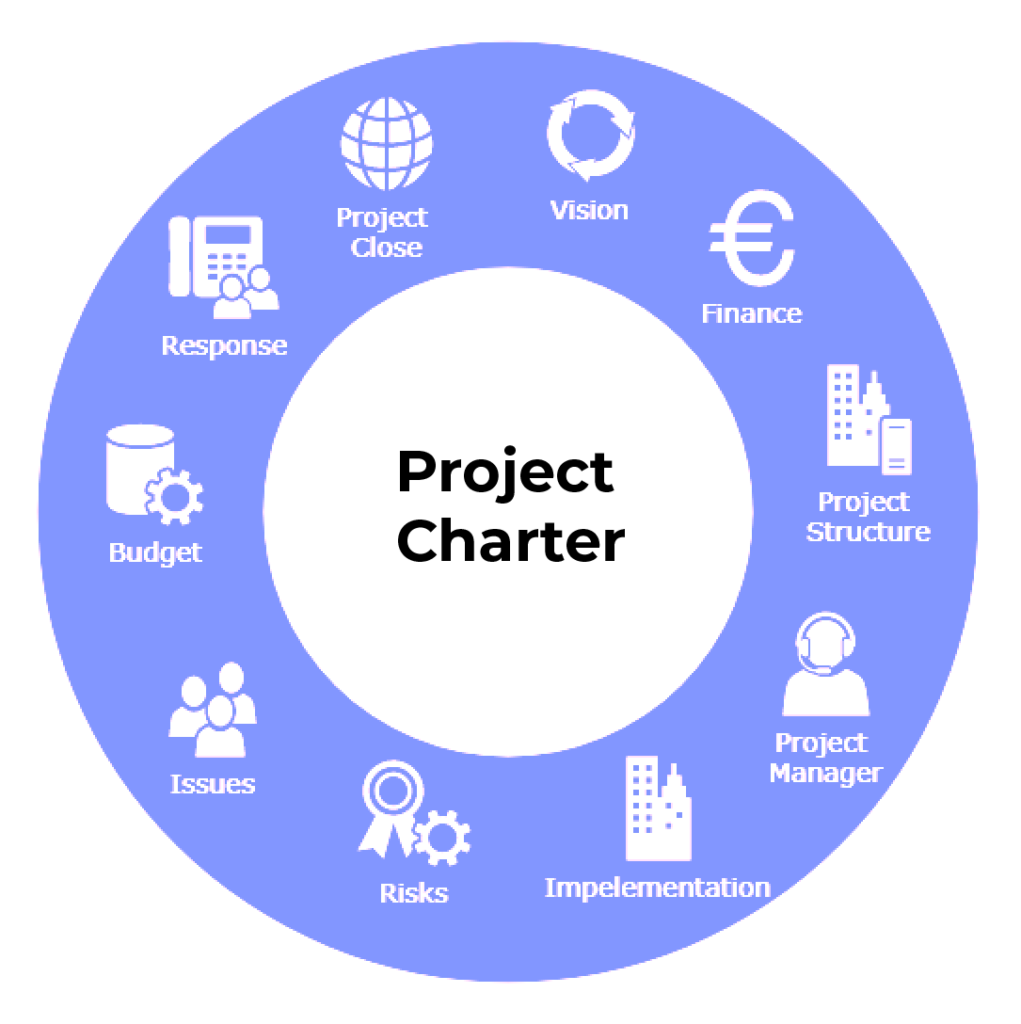Project Management Guide
Project Management Guide
What Is Project Management?
What Is a Project?
Why Is Project Management Important?
Project Life Cycle Phases
- Project Initiation
- Project Planning
- Project Execution
- Project Monitoring
- Project Closure
Project Management Methodologies
- Waterfall Project Management
- Critical Path Method
- Critical Chain Project Management
- Agile Project Management
- Scrum Project Management
- Kanban Project Management
- Lean Project Management
- Six Sigma Project Management
- PRINCE2
- PRiSM
- PMBOK Method
Project Management FAQ
What Is a Project Charter in Project Management?
Let’s begin with the dictionary definition of a charter. It’s a formal written document that defines the relationship between two entities.
When it comes to project management, however, a project charter is a document that lays down the high-level nature of the project. It explains goals, tasks, timelines, and stakeholders.
It is created before the project is about to start. And it outlines the purpose, as well as the associations between the project, the stakeholders, and the strategy.
As the Project Management Institute Guide puts it, the project charter is “a document issued by the project initiator or sponsor that formally authorizes the existence of a project, and provides the project manager with authority to apply organizational resources to project activities.”
Therefore, the role of a project charter is that it:
- Defines the reasons for undertaking the project.
- Outlines the project objectives and the limitations
- Summarises high-level solutions to achieving project goals.
- Identifies key stakeholders.
There are many advantages to a clear and professional project charter.
- It clarifies relationships between entities.
- It’s a tool to streamline processes.
- It’s a way of communicating the ambition of a project from the start.
- It can lay down the best practices to be followed.
What Should a Project Charter Include?
From the above, you already should have an idea of the importance of a project charter. Now, it’s time to drill down into the details.
Every project charter will differ depending on the nature of the project. In general, though, a good project charter that fulfills its role should contain the following elements.
- The goals of the project in a crisp and clear manner.
- A bird’s eye view of the overall necessities and requirements.
- A description of the nature of the project.
- A general overview of the risks and watch-outs.
- The timelines, with start and end dates, along with deliverables and milestones.
- The budget involved, summarised under the various heads of expenditure.
- A system of approvals and sign-offs needed for the project to progress.
- The stakeholders involved in the processes and steps to completion.

Preparations for a Project Charter
A project charter is not a document that should be written without homework and planning. It is, after all, one of the foundation stones of the project that is about to commence. It will be referred to time and again during the course of the project.
That is why it makes sense for project managers to get information, assess objectives, and gauge resources before writing such a charter.
Here are some of the key steps.
- At the outset, the main players involved in the work, as well as all the stakeholders involved, need to be listed down. Discussions with them about the project will go a long way in clarifying needs and expectations.
- Then, the scope of the project needs to be identified. This is a vital component: according to the PMI, over half of the projects face scope creep in some form or another. They define this as “the uncontrolled expansion to project scope without adjustments to time, cost, and resources.”
- Also important is the identification of all stakeholders and customers. Their needs and approval levels should be assessed and clarified to avoid confusion and irregularity during the course of a project.
- Project risks should be foreseen as far as possible. The project charter can then identify them and list ways of overcoming them.
- Of course, the requirements and objectives of a project are of prime importance, too, and ought to be verified by the client and senior management.
- Resources of all kinds also play a part. This relates to human resources, as well as costs.

Overall, you should keep in mind that the above points are not just the decisions of a single individual. They should be discussed and clarified, and only then can the work of writing the project charter begin.
How to Structure a Project Charter
Because a project charter should contain essential information in a crisp manner, the way it is structured is important.
At a glance, it should make clear the nature of the project, the key steps to completion, and the parameters for success.
A proper structure, then, can be a great help in organizing the information in a logical manner.
Here is one such way of classifying and categorizing the contents of a project charter.
- Define the Problem Statement: what is it that the project is setting out to overcome? What is the key task it is being carried out to achieve?
- Make the Business Proposition: who are the parties involved in the project, what are their expectations, and how is the project advantageous in terms of skills and profits?
- Create A Goal Statement: what is the project’s overall goal, and what are the subtasks? What is the measurement yardstick for this?
- Specify A Timeline: how long will the project take from start to finish, and what are the milestones along the way? By when do approvals have to come in for this to be achieved?
- Identify the Scope: what are the defined features and functions of the project? What are the boundaries set in achieving the goals?
- Mention the Team Members: who are the key personnel for execution and approval of the project?
How Project Charters Are Sometimes Misunderstood
Project managers sometimes misconstrue the nature of a project charter. This can be because the dictionary definition of a charter is an executed contract or deed that is legally enforced.
The fact is, project charters need not be legal in nature and are specific to a certain task during a certain period of time. As we’ve pointed out, they should be simple and crisp.
Further, a project charter need not be just a single document. There could be an overall charter that outlines the project, with annexures of the various points covered. The signatures of the client and the project company on the main document provide the necessary authorization.
At other times, there can be confusion over requirements. Many project managers feel that requirements evolve over the duration of the project, and thus they cannot be ascertained at the start.
In a charter, however, the point is not to get into details over the exact nature of requirements but to summarize the broad resources that will be necessary. The charter, then, can be thought of as an aerial view. As the project progresses, more details can and will come to light.
All of the above is why a project charter is an important document. It’s a reference and a guide that flags off a project and then provides a sense of direction. It’s certainly worth spending time to create one right at the start.
